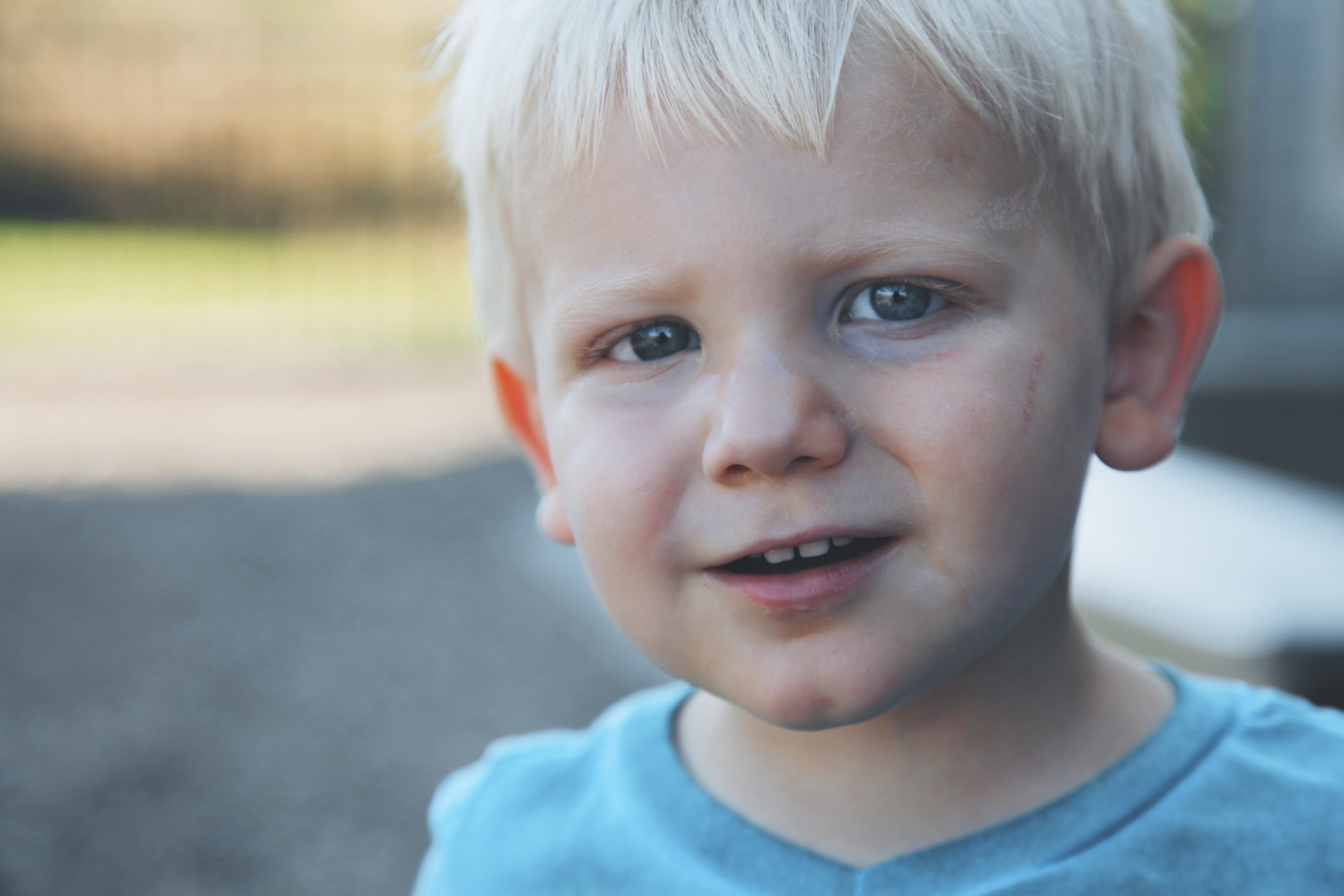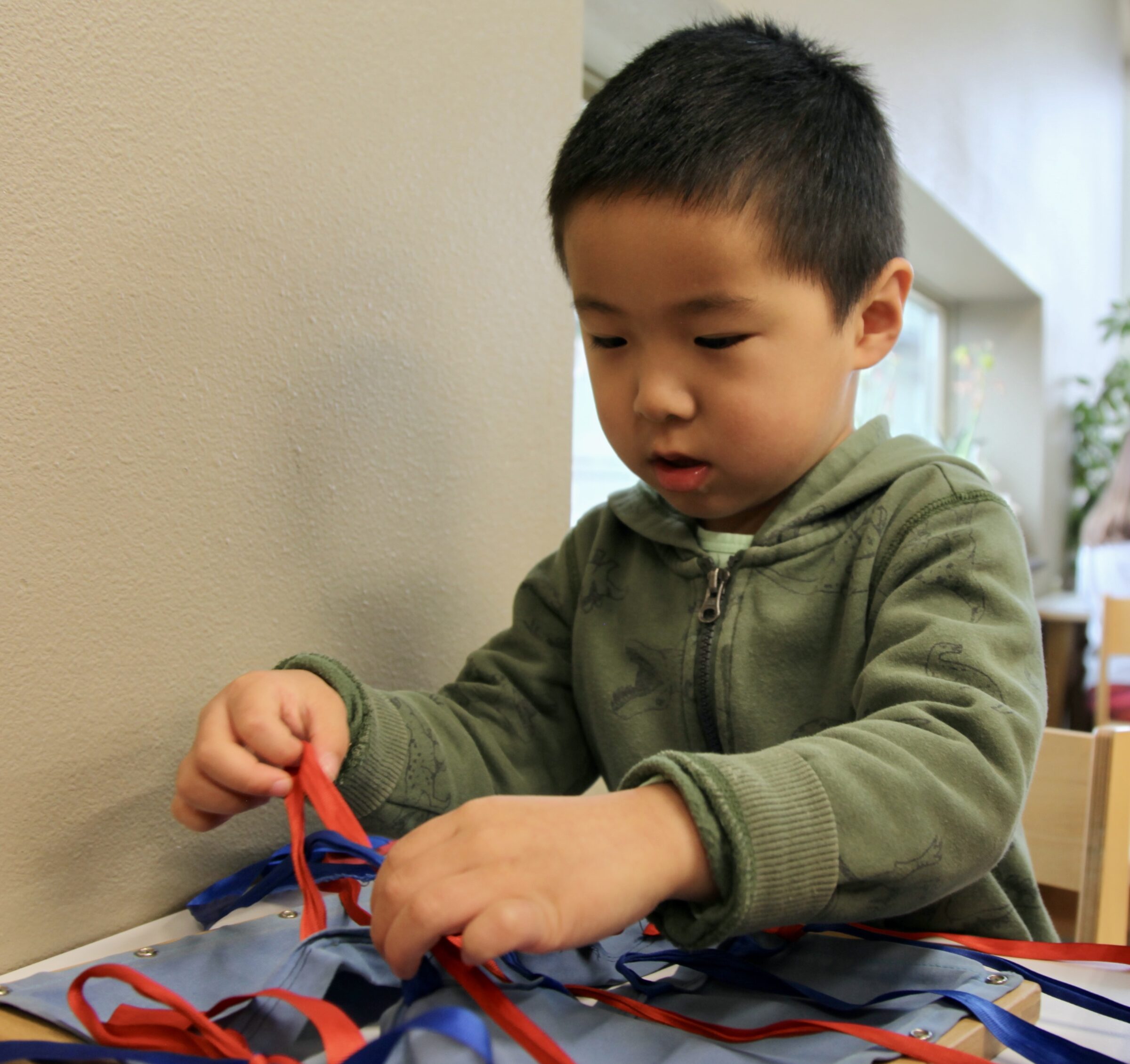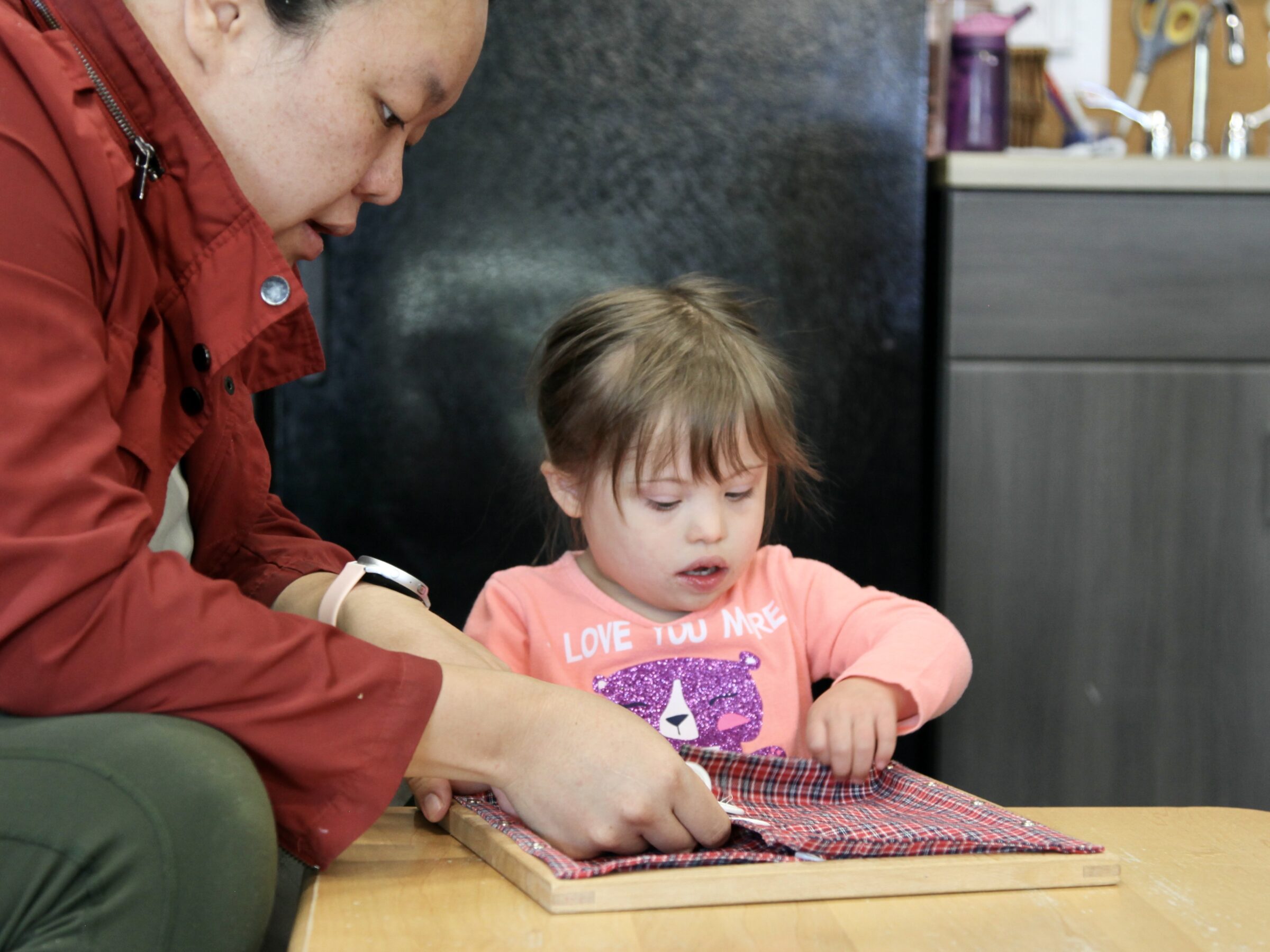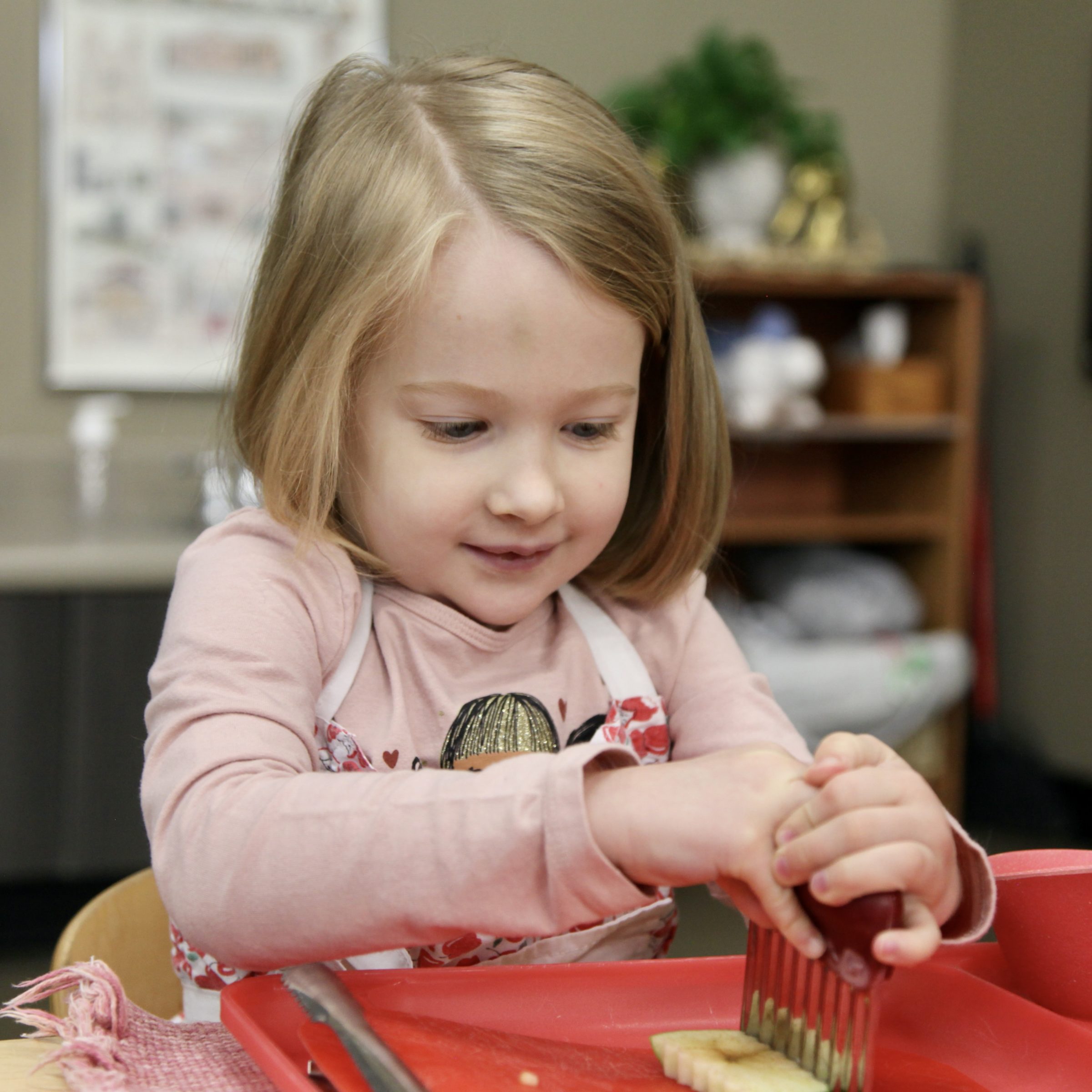A Montessori Life
Podcasts
The Montessori Classroom can feel transformative, magical, mysterious. This weekend, We recently held a Parent Education Workshop on A Montessori Life, about certain principles and activities which are natural to the Montessori classroom which might translate well to family life at home. We also recorded a podcast. You can scroll to the bottom or find us on iTunes to listen.
We have observation windows at every classroom, one-way glass that allows parents and prospective parents to view the classroom without impacting the goings-on. If we were to come into the classroom, we would change the dynamic, and since this is the Children’s space, we remain outside to observe.
It’s not uncommon for prospective families to watch with wonder at the achievements of the youngest children. She’s putting her work away, and no one asked her! He’s cleaning up after himself!
“It’s this space, these dynamics — a routine, a sense of responsibility, systems in place to aid a child to independence — that makes all the difference.”
This is sometimes followed with a bit of worry, my child isn’t like this. She doesn’t clean up after herself, and I’m always putting his toys away. It’s okay, these are just regular children, too. It’s this space, these dynamics — a routine, a sense of responsibility, systems in place to aid a child to independence — that makes all the difference.
Likewise, we love having current families come and observe again once their child has settled in to this new space. How has their child adapted to this place they’ve seen previously, where they might have imagined their child thriving, as well as imagining their child having a bit of trouble with walking, tucking in their chair, putting away their work.
“Who is this child?!” they wonder. She cleaned up a spill without being asked AND put the cloth in the laundry! He’s hanging up the apron after he finished painting, but I’m always picking up his coat from the strangest places! How come she can wash 20 plates from snack, yet she doesn’t offer to help load the dishwasher?
This is where we take away the magic and the mystery. The classroom is still transformative, but we put together a few thoughts that might help transform home dynamics, as well.
These might or might not fit into family life; that’s just fine! Perhaps they spark an idea for something that would work better for your unique family situation, or your own child’s needs. You’re the expert in your child, and we hope these notes help you feel empowered to make a minor adaptation or two which might make all the difference.
At this young age, children are striving for independence. This is different from going off to college, but can feel as dramatic for parents. This independence is a young child meeting a few of those needs that we’ve met previously for them. We fed a baby; she’s working toward feeding herself. We changed ten-thousand diapers; he’s ready to use the toilet. We interpreted cries and coos; she is learning speak for herself and express her own needs. We were happy to carry; he’s walking on ever-more-coordinated legs.
These conquests of independence are natural, joyful, and a moment for celebration. In fact, when your child can take care of a few things for herself which have previously been your responsibility, it instills a sense of pride and contributing to the family, takes a bit of pressure off you, and frees up time to spend enjoying one another’s company. Growing into independence is a good thing.
There are three areas we focus on when speaking with families about how to bring Montessori into home life. The gift of the classroom isn’t only, or even primarily, the work with the materials. It’s the Routine, the Responsibility, and the Systems in place that help children thrive.
“What do we do? That’s our routine.”
Routine is more important to some of us than others, but for a young child who is trying to figure out the world, putting logic in place, and navigate the unspoken rules of everyday life, a Routine is vital.
Having a Routine in place can help a child know what to expect. While 80% of the time a tantrum can be traced back to Hungry and Tired, perhaps the other 20% could be correlated to unpredictability. “All of a sudden” it’s time to leave the park, or this time “one more story” actually meant One More Story. When we know what to expect, we’re not surprised.
If the routine is wake up, eat breakfast, get dressed, brush teeth, go to school, a child knows what’s coming. If those things happen in a random order, a child might push back when she’s asked to get dressed but she wanted to eat her breakfast first, or when he’s asked to brush his teeth, after all, we didn’t have to do that yesterday.
It’s natural for family life to occasionally be a bit tumultuous. Perhaps there are other siblings’ schedules to manage, or variable work schedules, or errands that need to be run after school. That’s okay. That’s a huge part of the reason we work so hard to keep the classroom calm and predictable day after day. But are there opportunities for establishing a routine? There’s no need for weekends to be identical to school days, and we learn a bit of flexibility here, but is there a routine which could be followed on the weekends? Maybe we eat breakfast all together, or we’re sure to be home every day for nap, or weekends are special because we have pizza and watch a movie, or even on the weekends we follow our bedtime routine of dinner, brush teeth, bath, two books, and lights out. Predictability is calming for a young child, and can help a child be a bit more relaxed in those moments when we require flexibility.
“Where could a child contribute? That’s the responsibility.”
Responsibility can sneak in when a routine is in place. Your child notices you bringing dishes to the sink after breakfast every day, and suddenly you notice you have a shadow carefully walking with her own plate. You’ve been following the same routine in getting ready for school each day and just as you’re ready to call out a reminder to brush teeth, someone comes smiling down the stairs, proud of their sparkling teeth.
What are some routines you family has established? These might not even be intentional, but we fall into routines nonetheless.
Is Saturday for Laundry? Do you pack lunch the night before? Do you set the table every evening for dinner? Any routine is an opportunity for responsibility. Even a very young child can help move laundry from the washer to the dryer, then pair socks and fold washcloths, then put away his own clean clothes, and pretty soon a child is helping with the whole process independently. A toddler can carry her lunch box to and from the car. Then she can put containers in in the morning and remove them when coming home. Eventually, she’s helping to pack her own lunch, even helping to make nutritious choices at the store. What starts out as putting one napkin at each place could grow into planning, preparing, serving, and tidying a whole meal, if we aid a child along step-by-step.
Where would you like to help your child make a contribution? What could be a moment of celebration and honoring your child’s independence, while also being a small transfer of responsibility?
“What do they need in order to be successful? That’s the system.”
This is where Systems complete the cycle. What do we do? That’s our routine. Where could a child contribute? That’s the responsibility. What do they need in order to be successful? That’s the system. The System can also be thought of as areas we as adults need to do a bit of preparation, forethought, or even providing structure or supply in order to aid a child into independence.
This can be helpful in thinking about areas that cause a bit of discomfort or conflict.
Are you always picking wet towels up off the floor after bath? The routine is taking a bath. The responsibility is hanging up the towel. The system is a hook at their level. It doesn’t need to be a permanent change — someday she’ll be able to reach that towel rack — but a temporary sticky hook right at two-year-old eye-level can pave the way to success.
The same can be said of a small laundry basket in a child’s room or bathroom; a fridge and pantry filled with nutritious breakfast and lunch items (keeping sometimes snacks, such as candy or cookies, in a solid container out of sight) a child can select to fill a lunch with a protein, a whole grain, a vegetable, and a fruit; a small shelf with a few toys arranged so that everything has a place rather than a toy bin where things can get jumbled.
This is why we call the classroom, The Prepared Environment. With a little bit of preparation, this child is capable of anything.
Written by:
Charlotte Snyder





